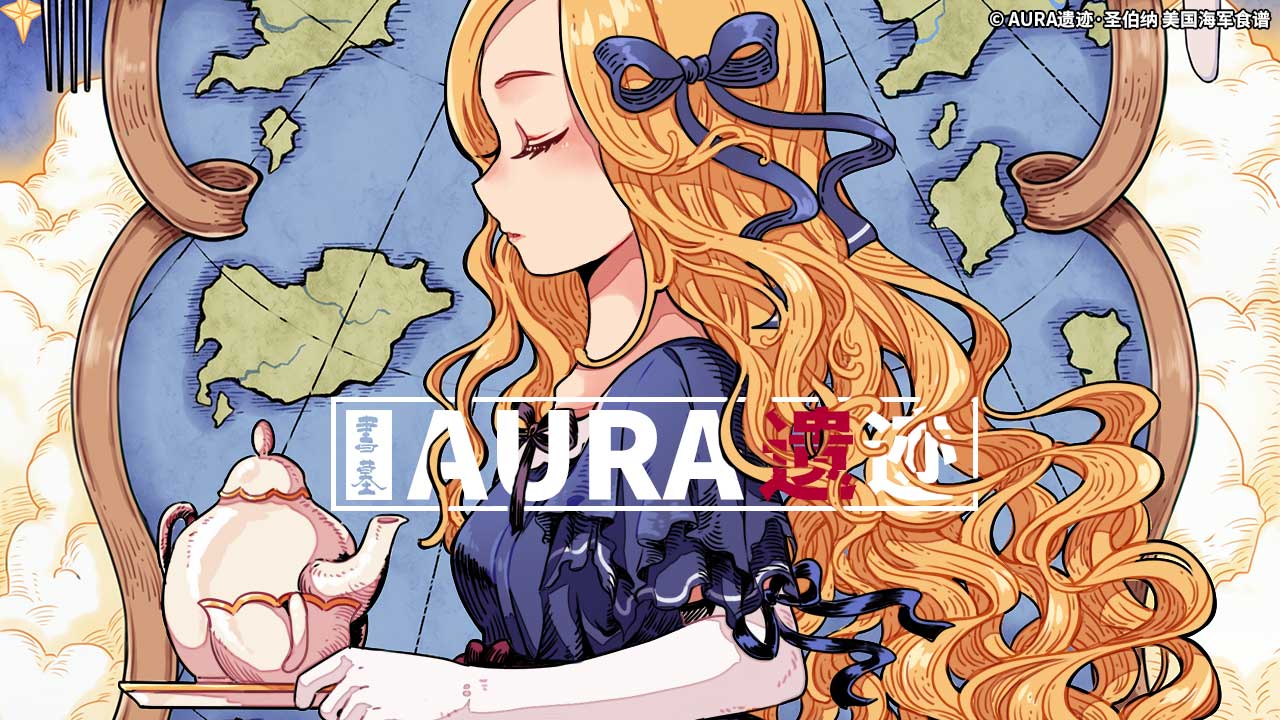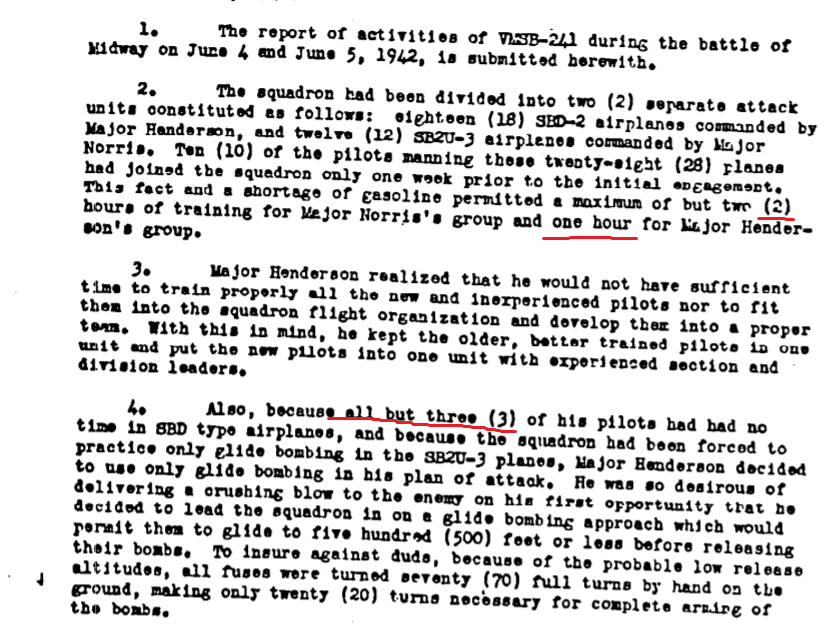This should probably be titled “Morgane argues with anons on the internet over history” –
Nah, I’m not really arguing. I am vigorously disagreeing. Also this is about the first time I’ve gotten comments on the IRL history as opposed to Pacific history/lore, so this takes precedent over some of the other comments (just look at how many things I’ve left unanswered from the forums or the channel or email…)
hello. regarding your post on the 19th 2017. you mentioned that the american pilots who flew at midway were greenhorns. while this is a general assumption i can assure you that with some digging this is the complete opposite case.
1: wildcats are in extreme short supply. and escorts were called off in an effort to increase the power of the bombing runs
2: thach’s wildcat flight engaged the zero swarm at a position of energy deficiency. aka, below.
3: 21 F2As were used on midway
it might be noted that of course. all 21 buffalos were smashed (well what did you expect they are like biplanes but worse), thach’s 6 cat flight slaughtered the zeroes with most members never getting the ‘thach weave’ briefing, and all ijn carriers went up in flames. if anything, i would say that the american crew at midway was just about equally skilled as their japanese counterpart. the japanese pilots however, probably didn’t expect wildcats to actually outmatch their zeroes.
I don’t think I can agree with that.
Commissioned officers they might be, but in the winter of 1941, these young brown-shoe officers, and their sometimes even younger backseat gunners and radiomen, for all their daredevil courage and enthusiasm, had nowhere near the length of service, the physical and mental training, or the combat experience of their Japanese counterparts. Nevertheless, in January of 1942, the three American carrier groups, with their embarked aircraft flown by young and untested pilots, were the only offensive weapons Nimitz had to hand, and he planned to use them aggressively. The Kidō Butai was supreme in the Pacific Ocean, but there were other targets of opportunity available to the American brown shoes.
Craig Symond, the Battle of Midway. Considered by many naval enthusiasts to be the best Midway book to come out to date.
I bring up this perspective because it is important to note that both the US and Japan were learning, which pre-empts a common and wrong impression that somehow six months into the Pacific war the US were suddenly Japan’s equal. As much as the US CVs racked up “experience” at Coral Sea, the Japanese CVs were also gaining experience considering that the Kidou Butai has been rampaging throughout the Pacific all the way up to that point as well.
In fact, US CV tactics did not mature prior to Towers/Sherman’s massive falling out. What made US CVs deadly was the doctrine involving the fast carrier task force, and that didn’t come about until 1943.
Other points to consider if you’ve done your digging.
- Yorktown’s flight group was a patchwork of pilots. Max Leslie’s VB-3 were reinforced from Saratoga, many of whom basically sat around after the Saratoga were torpedoed. Thach’s VF-3 had most of their veteran pilots sent to shore. His replacements includes that from the Ranger and other assorted pilots. Some hadn’t seen a carrier for months. Others haven’t served on one period. What’s more, VF-3’s veteran exec officer was killed a few days before Midway in an accident. Contrast this to the IJN air groups that has been training and fighting with each other since the beginning of the war. The advantage here, loathe as I am to admit it, still go slightly over to the IJN.
- Hornet’s pilots were completely green. Midway was their first combat. Even neglecting everything else 1/3rd of the US carrier airgroups are complete newbies. This experience is self-evident given the Hornet’s performance at Midway.
- Enterprise’s flight groups were veteran in that they had experience; this is still 1 on 4. Also, unlike the Yorktown planes, the Enterprise’s attack was less coordinated comparatively. Gray went home without engaging the Japanese, leaving Lindsay to fend for himself.
- The USMC pilots were a mixed bag. 21 pilots reinforced Midway on May 26th. 17 of those were fresh out of flight school, many with virtually no additional experience. Examples include the after-report from VMSB-241. Take a look yourself.

Emphasis in red, mine.
- The TBFs from what was supposed to be Hornet’s Torpedo 8 were also green. Haven’t seen combat at all.
- The 4 Army B-26s couldn’t even find the right course and had to be assisted by a friendly PBY to get to Midway.
You must have a very low opinion of the IJN to think that our guys up there were “just about equally skilled.”
1: wildcats are in extreme short supply. and escorts were called off in an effort to increase the power of the bombing runs
Source? Because I have Fletcher’s logs in front of me right now. He has 18 Wildcats in total on Yorktown. He’s keeping 6 for CAP and 6 for VS-5, which wasn’t launched in that first attack wave. That leaves 6 to go with Thach. Don’t think he called off any escorts there.
2: thach’s wildcat flight engaged the zero swarm at a position of energy deficiency. aka, below.
3: 21 F2As were used on midway
it might be noted that of course. all 21 buffalos were smashed (well what did you expect they are like biplanes but worse), thach’s 6 cat flight slaughtered the zeroes with most members never getting the ‘thach weave’ briefing, and all ijn carriers went up in flames.
You have a weird definition of slaughter. For one thing, our torpedo bombers got slaughtered.
From Thach himself:
“six F4F-4 airplanes cannot prevent 20 or 30 Japanese VF from shooting down our slow torpedo planes.”
Secondly, for our own fighter performance? From Buckmaster, Captain of Yorktown:
“When about 4 miles from the Jap outer screen., which in turn was about 10- miles out from the CV’s, two AA bursts were fired by a Jap ship. These bursts were used evidently to direct the enemy Combat Air Patrol to our planes, for almost immediately afterwards our VT and VF were attacked by about 18-20 Zero fighters. Our VF formed a line astern formation in order to stay together and give the leader an opportunity to turn and fire at the attacking planes. Soon after this the rear fighter was shot down. The formation twisted and turned to prevent the Zeros from getting on their tails and also to obtain firing position. During the engagement our remaining 3 VF were able to shoot down 5 Zeros. The Zeros concentrated most of their attacks on the rear plane, making beam and astern runs and pulling clear after each run.
The two VF planes directly over the torpedo planes were able to furnish considerable support to the VT during the first part of the approach when there were only 4 Zeros attacking. But later they were joined by 6 more Zeros, and the 2 VF were too heavily out-numbered to be of much help. They shot down one Zero and possibly another, and saw one Zero shot down by the TBD rear seat men. Soon thereafter, they became separated from each other and from the torpedo planes. One of these fighters was badly damaged and crash landed on board the Hornet. The 4 remaining planes of the escort group landed on board. They lost one pilot and two planes and shot down 6 and damaged two Zeros in the engagement.”
So let’s break this down using American numbers.
2 VF scored one kill. They were outnumbered so this is par for the course. Thach & friends, 3 planes in all, were able to kill 5 Zeros despite being massively outnumbered. This is impressive, but it’s not anything close to a “slaughter.” You are right to say that the Japanese got a rude awakening. This seems to be the case based on what sources we can access from the Japanese.
However, Thach himself scored 3 out of the 5 kills. So I’d say this is really a case of Thach himself being quite good and the Japanese underestimating their opponents. I’m fairly certain if you cloned four of him and put him in this fight then yes, it might have been something of a slaughter, but as it was it was a good hit on the nose.
Also, on the Buffalo?
The Finns had a 26:1 kill ratio flying those Buffalos. Not saying that they were great airframes, but if you knew how to make ’em work, you can. 😉
if anything, i would say that the american crew at midway was just about equally skilled as their japanese counterpart. the japanese pilots however, probably didn’t expect wildcats to actually outmatch their zeroes.
The Wildcat did not “outmatch” the Zero at Midway. Spruance’s action report reads as follows, which sums up the majority of the feelings on the Wildcat for this battle.
“(k) The performance of our F4F-4 is reported as greatly inferior to the Jap “Zero” fighter. The ammunition supply for 6 guns of our VFs in inadequate. For use against the unprotected “Zero,” 4 machine guns instead of six in our F4F-4’s, with the weight saved used for additional ammunition, merits consideration. A new VF with greater range and maneuverability is required.”
By the way, the Wildcat actually didn’t do too poorly. Postwar assessment showed that it would fight the Zero to more or less parity as we figured out very quickly how to actually fight a Zero. It still managed a 5+ kill ratio in 1942.
Anyways. At the end of the day, vigorous disagreements are what makes things fun. I mean, I do this so that people (myself included) can learn. So I hope you find my opinion – if not my answers – satisfactory. Thanks for dropping by.

